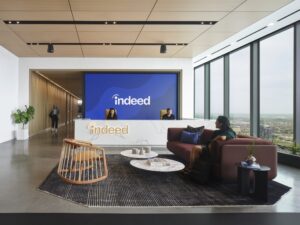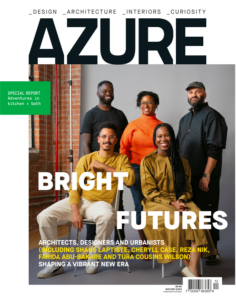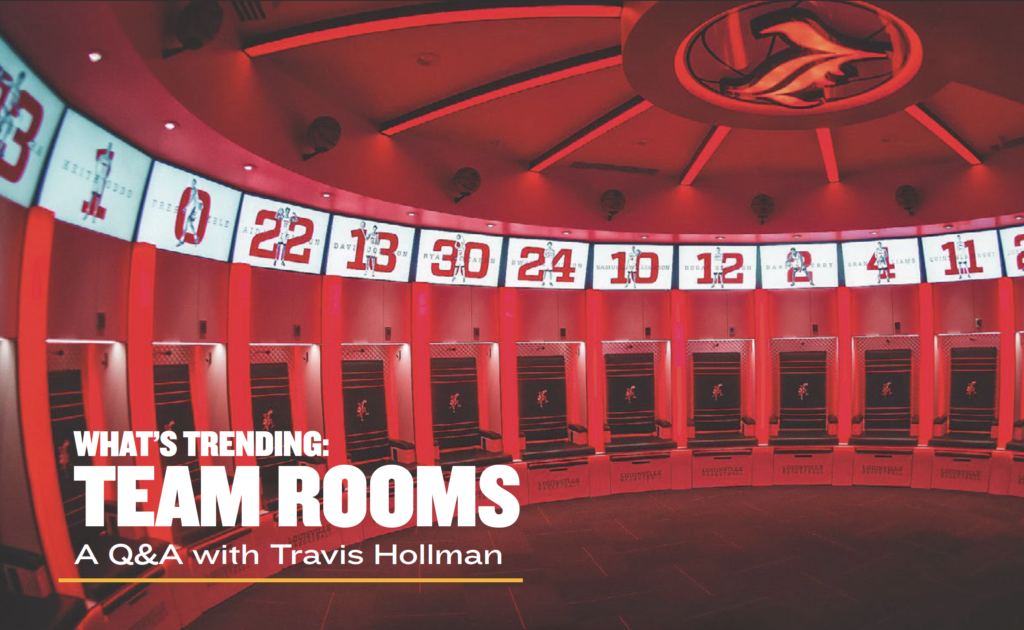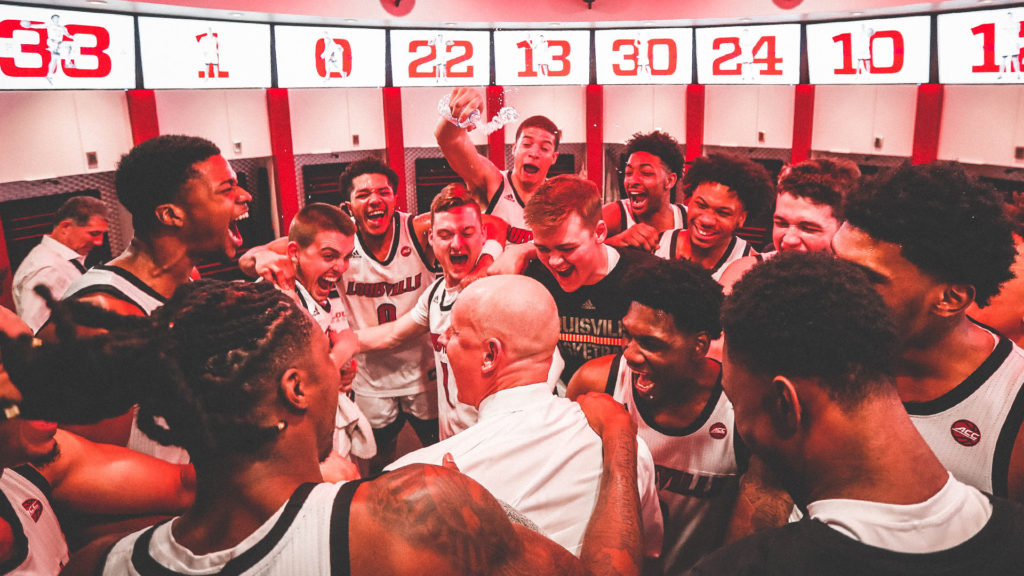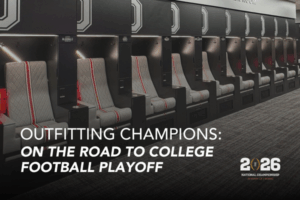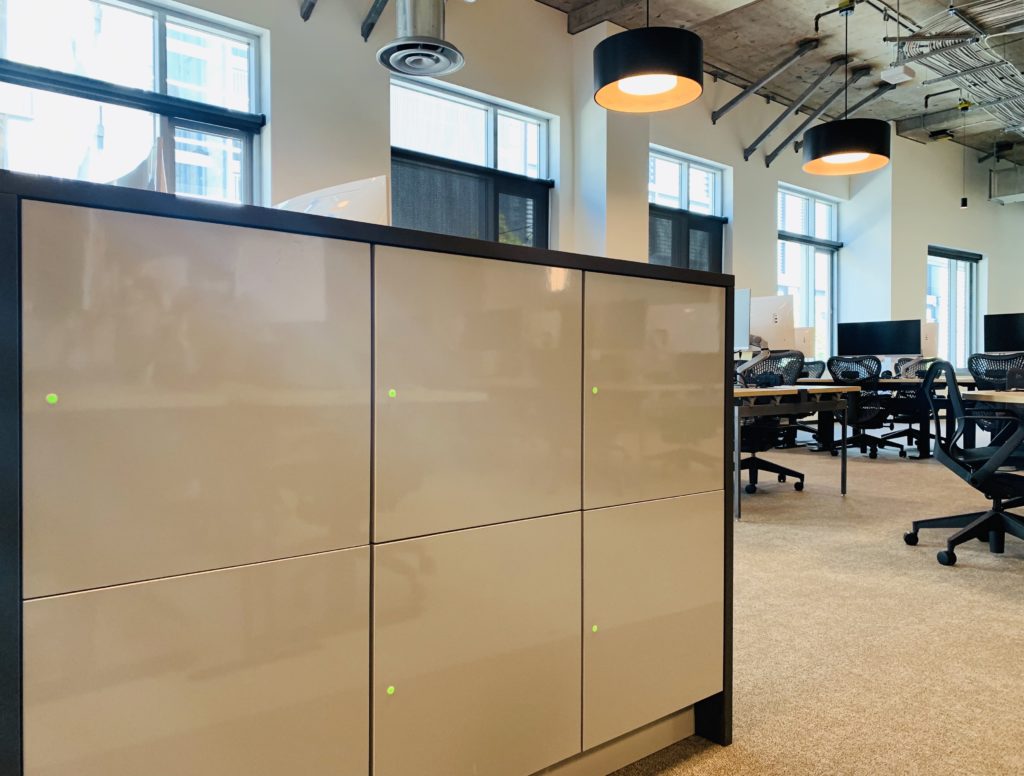
Lockers for the Hybrid Workspace
by Anna Zappia
Lockers are no longer just for education spaces or gyms, they are now changing the office landscape. Hollman, Inc. has manufactured more than 10 million lockers for a range of clients, from professional sports teams to tech companies. As organizations rethink their workspaces, Travis Hollman, president and CEO of the eponymous company, explained how lockers are the new office amenity.
Hollman, Inc. began in a different arena — on the court. “My dad, Joe Hollman, founded the company in 1976, making racquetball courts out of glass panels. Then, in the 1980s, we got into making lockers,” Hollman said. As the fitness craze swept the nation, Hollman, Inc. filled a need and saw an exponential growth in business. By 2006, the company was handling the construction of highly-customized locker rooms for college-level and professional sports teams, still a key sector for the company today.
Hollman noted that when he received inquiries from larger corporations he sensed that the next evolution was near. “About five years ago, banking industry clients and high-tech businesses started calling, and they have always been ahead of the curve. One of the first of these clients for us was J.P. Morgan, and they bought 3,000 lockers. It was a real eye-opener for me.”
With the rise in popularity of ride-sharing services, transportation and buildings themselves have been forever altered, and more lockers are required to accommodate this shift in lifestyle. “Parking has always been a major requirement for commercial buildings. If you had 1,700 employees, you needed at least 1,500 spots. Uber came along and the building codes changed. Companies can retain that area and repurpose all of it with open office space and lockers.”
More Space, More Amenities
With most companies set to adopt a hybrid model in the coming year, the former parking lot areas are not being used for desks or increased office square footage, but rather amenity-rich areas designed to support the company culture and ensure employee retention. Everything from game rooms to fully-stocked eateries can be found in modern offices. Hollman explained that added space will bring even more options for staff.
“The tech companies like Google were really the first to make the office a destination, with these extra amenities. When you have a normal office, it’s difficult because you’re worried about the lease and what you’re paying per each square foot. But now that you have people working remotely and hot-desking when they do come in, there’s more offerings in the exact same space.”
Such flexibility means less furniture, however. Lockers are essential components that have replaced desks as the new storage option. “Because of the pandemic, we’ve seen an uptick in the number of people working from home, anywhere from 30 to 50 percent. It’s hard to justify keeping that 10-by- 10 office open for somebody. As we continue to embrace this flex model, employees want lockers so that they can store their personal belongings,” Hollman said.
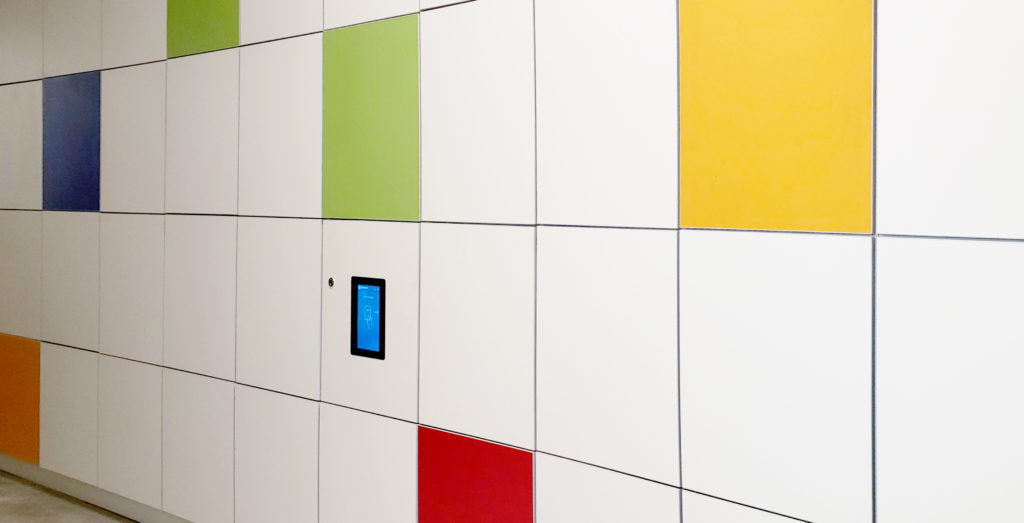
Personalization
In the pre-pandemic office, the desk was an employee’s central hub and place for work accessories and personal items like photos, artwork, and plants. Now that personal desks will be limited and staff will be working from home most of the week, lockers are a personal space where a person can add creative touches that make the office more interesting.
“People are personalizing their spaces, and now, when employees come into their workplace or business, the locker is the only personal space they have. Everything else is shared, so if you want to put your mark on something, that’s a great spot to do it,” Hollman said.
Made from a range of materials including wood laminate, glass, and phenolic, lockers are transformed from simple storage units to unique features. “Our acoustic lockers have a felt material on the inside that people can put pictures on. We’ve done lockers with whiteboards for brainstorming sessions or drawing pictures to foster creativity at work. You can take these add-ons and make them your own, which is key to making the user experience better.
Data-Driven Technology
Lockers are no longer static pieces in an office or fitness center. The latest lockers can provide a seamless user experience with minimal equipment and hassle. The Vecos locker solution is keyless and can be operated easily with a smartphone or an employee’s access badge. Facilities managers can control the lockers remotely, and gain insight about usage — in real time.
Hollman noted that this access to information has been a game-changer for space-planning, and allows companies to track employee habits for greater insight into productivity. “With this new type of locking system and the mechanics, it gives management data on how many people are using the lockers, who specifically is using them, what time they came into the office, and what time they left. There is a lot of data that is being collected via the locker systems now, and that’s important because every company is data-driven. If you can implement policy effectively based on this information, it benefits your company and staff in the long term.”
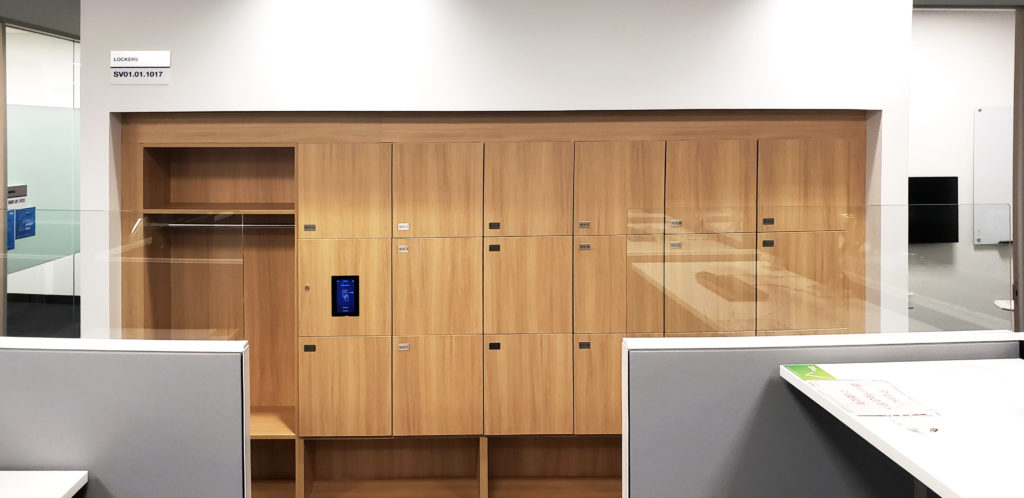
Architectural Elements
Lockers used to be an afterthought, relegated to a hallway or tucked away from the main floor. Hollman noted that lockers are main elements in offices, part of a space rather than separate pieces. “When we first started doing lockers, they used to be placed in hallways. For security reasons and ease of use, we are seeing more lockers inside the rooms where the people and desks are.”
He added that lockers increase the functionality of each work area. “With all of these open office spaces, you need breakpoints. Lockers are being used as furniture or as walls within four walls to break spaces up. They’ve become these architectural elements.”
Read the original article here
RELATED ARTICLES:

